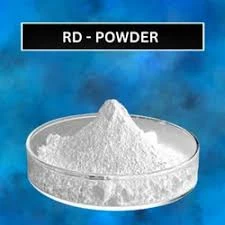
Nov . 26, 2024 07:17 Back to list
Exploring Applications and Benefits of Hydroxypropyl Methylcellulose in Various Industries
The Use of Hydroxypropyl Methylcellulose An Indispensable Polymer in Diverse Applications
Hydroxypropyl Methylcellulose (HPMC) is a versatile and widely used polymer derived from cellulose, the most abundant organic polymer on Earth. This non-ionic, water-soluble polymer has gained considerable attention across various industries due to its unique properties, including thickening, emulsifying, and film-forming abilities. Its structure, derived from the modification of natural cellulose, offers a myriad of functionalities, making it indispensable in pharmaceuticals, food production, construction, and personal care products.
The Use of Hydroxypropyl Methylcellulose An Indispensable Polymer in Diverse Applications
The food industry also benefits significantly from HPMC. As a food additive (E464), it serves multiple functions, including as a stabilizer, thickener, and emulsifier. It is particularly valuable in gluten-free baking, where it helps improve the texture and elasticity of dough, mimicking the properties of gluten. HPMC’s ability to retain moisture prolongs the shelf life of baked goods, ensuring they remain fresh for a longer duration. Furthermore, its use in low-calorie and reduced-fat products is notable, as it contributes to creamy textures without adding calories, making it a favorable ingredient in modern dietary products.
use of hydroxypropyl methylcellulose

Construction is another sector where HPMC demonstrates its remarkable utility. It is extensively used in the formulation of cement-based materials such as mortars and plasters. HPMC enhances the workability of these mixtures, allowing for easier application and improved adhesion to surfaces. Additionally, it increases water retention, which is crucial for the hydration of cement and proper setting. This characteristic not only enhances the mechanical properties of the final product but also contributes to the longevity of construction materials, making HPMC a vital ingredient in sustainable building practices.
In the personal care and cosmetics industry, HPMC is utilized for its thickening and stabilizing properties. It is commonly found in lotions, creams, shampoos, and various cosmetic products, enhancing their texture and providing a pleasant sensory experience. Its film-forming ability also lends itself to the creation of breathable films in products like face masks and peels, contributing to overall skin health. Moreover, HPMC’s hypoallergenic nature makes it a preferred ingredient for sensitive skin formulations, ensuring safety and efficacy in personal care applications.
Despite its numerous advantages, the use of HPMC is not without challenges. As the demand for natural and sustainable ingredients rises, there is a growing scrutiny of synthetic polymers, prompting the industry to seek eco-friendly alternatives. However, ongoing research aims to optimize the production processes of HPMC, focusing on sustainability without compromising performance.
In conclusion, Hydroxypropyl Methylcellulose exemplifies the versatility and functionality of modern polymers. Its applications span across critical sectors, including pharmaceuticals, food, construction, and personal care, highlighting its importance in enhancing product performance and consumer experience. As industries continue to evolve, HPMC will likely remain a vital ingredient, bridging the gap between innovation and functionality in a rapidly changing world. Its significance in addressing contemporary challenges, while maintaining efficacy and safety, underscores the enduring value of this exceptional polymer.
-
HPMC for Tile Adhesive: Superior Bonding & Workability
NewsAug.30,2025
-
Premium Cellulose Ether: Effective Liquid Thickener Solutions
NewsAug.29,2025
-
HPMC for Tile Adhesive: Enhanced Bonding & Workability
NewsAug.28,2025
-
tile-bonding-additives-for-stronger-bonds
NewsAug.22,2025
-
construction-grade-rdp-for-wholesale-needs
NewsAug.22,2025
-
trusted-hec-supplier
NewsAug.22,2025







